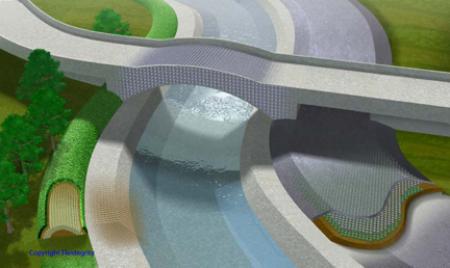From roads to bridges, stormwater is something that can wreak havoc if the problem is not dealt with immediately. In the developed environments, the unmanaged stormwater could lead to two major and some minor issues. The two major problems will be flooding caused by the runoff, and the second one is water pollution.
Stormwater Management has a crucial role in the preservation of water quality around the world, which is becoming a primary concern. That’s why governments all across the globe are encouraging the engineering community to come up with a solution that is quick and lasts long. Replacing the already established structures will take years to finish while the problem keeps on affecting the population. Hence, innovative solutions are needed to keep the groundwater and surface water ecology safe and sound, protecting the development of economics alongside.
On a micro level, the developers face the challenge of complying with the strict regulation for stormwater management. Stormwater is a significant source of water for agricultural land and other industries as well. So, if the stormwater runoff must be stored onsite, the volume must be taken into account while designing the facility. While other researchers, scientists, and engineers are looking for a solution, C6XTY has already found one. The answer to stormwater management lies with soil.
We don’t even know how much heavy metal, oils, debris, and other toxic substances are deposited around the construction areas that are taken to the lakes, rivers, and bays during storms and rains. However, we all are familiar with soil’s inherent ability of filtration. So, all you need to do is to design a material that can keep the soil compact and behave like soil to prevent runoff. Moreover, it is essential so that the runoff from roads and bridges won’t pollute the water that further smothers the aquatic habitat and clog the waterways. Fortunately, C6XTY already has a solution for such problems.
C6XTY working towards a better future:
Just imagine how the structural 3-D geo-textile design can be incorporated in the roadways and bridges for stormwater management. Having bridge-sized elastics and permeable roadbeds is possible now with geotextile solutions of C6XTY. These structures have the load-bearing capability with permeability and self-draining features. They will allow the water to pass through the materials into the ground without any runoff.
Flextegrity has assembled an array of architecture that can contract the defined specifications and limits. Moreover, technology helps us to analyze the components that can be disassembled and reassembled without affecting the whole structure. The designers and engineers have gained the ability to integrate nature’s geometry in their structures. Hence, we can create a natural form for the structure so that it will behave like a natural landscape that was replaced.
C6XTY design soil stabilization fabrics that can be used for sidewalks and streets to provide them with permeability and strength. But the application of the C60 molecule isn’t limited here. The C60 icosahedrons structure is often used in intelligent sensors, microelectronics, and in a wide variety of materials whose structure needs to be stronger. Flextegrity 3-D geometry embedded into elements like fertilizers, soil stabilizers, plant seeds, and water storing gels can be helpful in stormwater management.

